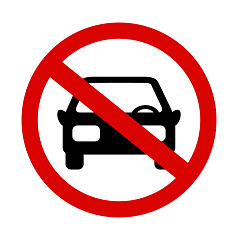When visiting cities in other countries, one is often struck by differences in their transportation systems. These differences are among the most visible indicators of variation in underlying social, political, and economic systems.
Take, for example, the Soviet Union and the countries of Europe and North America. Going from east to west, there is an unmistakable increase in the relative importance of the automobile and a corresponding decrease in the importance of public transport modes, such as bus, streetcar, subway, and commuter rail.
In the United States and Canada, the vast majority of urban travel is by auto. At the other end of the spectrum, in the Soviet Union public transport almost completely dominates, with extremely low levels of auto ownership and use. Europe lies along the middle of this spectrum, with Eastern European countries much closer to the level of public transport dominance in the Soviet Union, and with Western European countries somewhat closer to the level of auto dominance in the United States.
These differences in urban transportation have not arisen at random. To a significant extent, they result from decades of deliberate public policy. In the Soviet Union and Eastern Europe, socialist governments have directly set the costs of auto ownership and operation extremely high through their system of regulated prices: in addition, they have sharply restricted auto production, thus keeping supply limited. At the same time they have offered extensive public transport services at extremely low fares.
By contrast, policies in the United States have strongly encouraged auto ownership and use. For many decades, large subsidies to highway construction, automobile use, and low-density suburban housing have made the automobile very appealing if not irresistible. Since the same policies have contributed to the decline of public transport, that alternative was eliminated for most Americans anyway.
Dang cool to see outlined like this. America does love slashing its public goods and services. And yeah clearly admits to heavily subsidising car ownership through oil, road, and other subsidies. Yet another aspect of life better under socialism
I’ve been writing an environmental sociology paper on automobilism, I wanna post more quotes like this from journals and books etc., the more critical scholars seem to see it for what it is, an obscenely wasteful and destructive system
I can’t fully express it but I think there’s an interesting tie-in here seeing the opaquely tinted escalade SUVs with private drivers ferrying around the ultra-rich in NYC on Park Avenue and the like. I know people in NYC who work at banks and deliberately avoid the subway to distance themselves from the proletariat. It’s nuts considering how much better transit is than private vehicles in much of the city too. I guess the point I’m making is I can personally confirm the existence of elites who very nakedly boast of their disdain of non-private transit because they want to flex how bourgeois they are.


